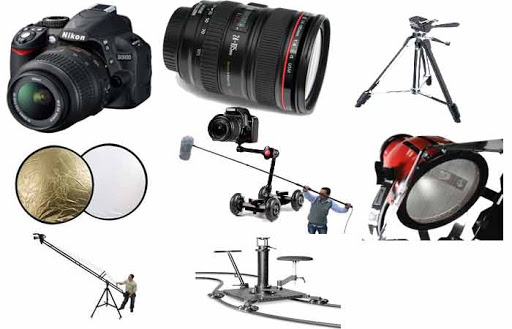
First of all congratulations on starting film school! You are probably already trying to figure out what equipment you will need to get started. Fortunately, most programs have many important tools available for students—namely big stuff such as camcorders and lights. Still, there are accessories, expendables, and other pieces of gear that you’ll want to have on hand or own yourself. So what exactly do you need to be prepared for film school? Luckily, not all that much.
To get started, you can likely get away with a camcorder, mirrorless camera, or DSLR with high-quality Full HD video capabilities. It is quite easy to get an inexpensive model with 4K video these days, so that is definitely worth looking into. If you are just starting your program and you are lucky enough to have access to great, modern cameras, then you should be okay getting something relatively cheap for your personal kit.
If you’re buying an interchangeable lens camera, you can buy it with a kit zoom lens, or buy the body alone and choose lenses separately. For an APS-C camera with the kit lens, I recommend adding an affordable 50mm lens for low light shots and creative shallow focus.
Sound is as important as pictures, and you won’t get great audio with the microphone in your camera. Using a separate microphone will make a big difference. Lavalier (‘lav’) microphones, which clip onto clothes, are the most affordable way to get good sound. Wireless lavs are great if you can afford them. You can also use a directional microphone on a boom pole.
You really need to be listening to the sound on headphones as you shoot. But some cameras have limited audio recording options – and no headphone sockets – so you may need a separate audio recorder.
It’s important to keep your camera steady. Some cameras have very effective built-in stabilization, but most filmmakers use a tripod or monopod at least some of the time. If you want to be able to pan and tilt your camera smoothly, you’ll need a fluid head tripod. You can also get sliders (for smooth tracking shots), electronic gimbal stabilisers (for continuous flowing shots), and jibs (for vertical camera movements).
Once you start to get serious about filmmaking, you’ll want to control the lighting. You can use inexpensive five in one reflectors to enhance natural light. Basic work lamps are a good starting point for learning about creative lighting. For filming on the go, LED panels are the most convenient option, though good ones are expensive. For a budget studio setup, CFL soft box lights could be a good choice.
You can edit on Macs, PCs, phones or tablets.
I use Macs. They’re designed for video editing and widely used in the film and media industry.
You’ll get more for your money with a PC, but they aren’t as user-friendly and you’ll need to check that the spec is good enough to run your editing software. Video editing – especially 4K – takes up a lot of space and needs a powerful computer.
If you don’t need to be portable, a desktop computer will be better value for money than a laptop.
If you’re just doing small projects, you can keep all your video on your main system drive, but for large and more ambitious projects you’ll probably need external drives. Solid state drives (SSDs) are faster but more expensive than hard drives.
As always, you can ask any questions in the Comments section, below, and we will be more than happy to help you as you prepare for film school.
Monday – Saturday:
11:30 AM – 9pm
Copyright © 2025. All Rights Reserved.
Website Powered By DABBS Solutions Pvt. Ltd.
Social Chat is free, download and try it now here!